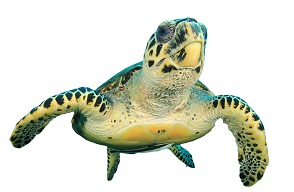
There seems to be a National Day to celebrate everything nowadays, personally I am waiting for National Crisps Day. However that said, often they can be a lovely way into a topic for our children. Something that helps to focus their attention on an area that otherwise might get forgotten or mentioned briefly in passing.
For example did you know that on 23 May it is World Turtle Day? What a fantastic reason to take a look at these majestic creatures that roam our world’s oceans. Animals that we may only come into contact with when we venture onto tropical beaches and see their numerous offspring making a mad bid to reach the ocean after hatching. Did you know it is only about 1 in 1000 baby turtles that make it to maturity? This is why their hatching out is such a spectacle to observe and why it is so important their hatching beaches are protected by law. Key stage 2 teachers may remember the Year 5 optional SATs paper all about turtles and the fantastic discussions that may have arisen from the conservation articles the children studied.
Turtles also offer an opportunity for our children to study large numbers. They are some of the longest living creatures on the planet, most children will be able to tell you that Crush, the turtle in Finding Nemo, was 150 years old!
How about size? Some of the smallest turtles only grow to be about 10cm long whereas the leatherback turtle can measure as much as 2.2m and weigh 700kg. They mainly eat jellyfish and in some areas, keep jellyfish populations under control. Often their appetite for jellyfish can cause problems for them as they ingest plastic bags found floating in the ocean leading to death.
They travel immense distances over nearly the entire planet. One tracked turtle was found to swim from Indonesia to the USA, a total of 20,000km in a jellyfish foraging mission lasting 647 days. What a wonderful geography activity to study where the turtle might have visited.
It is also fascinating that females have been found to return to the same beach they were born on, to lay their eggs. They may not visit these beaches from the moment of hatching to when they decide to breed between 10 and 50 years later!
A study of turtles can take you further than just the animal itself. Why not use it as a springboard to studying marine habitats, the Our Ocean Planet resources are a great place to start.
As is the Film Education website where there are free resources about the Great Barrier Reef whilst linking to the film Finding Nemo. I imagine the children will be re-inspired with the release of the next incarnation of the franchise in Finding Dory.
If you want to study the life cycle of the turtle then Arkive has some excellent lesson plans and a Turtle Life Cycle game to play.
There is a lovely podcast from the Planet Earth Online collection, Noisy Coral Reefs, Melting Ice Sheets and Whale Speak, that the children can listen to.
Of course if you want to go all out Turtle then you could get the children programming using the Turtle program. Can they draw an octopus in an undersea habitat using their knowledge of control programming?
